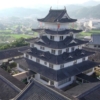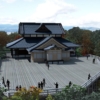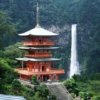Mameshiba House - Little Shiba Inu Breeder in Osaka, Japan
Mameshiba, which is smaller than an ordinary Shiba-inu, is very cute and popular among foreigners. Today, there’ ...
What’s Kofun? - The First World Heritage Site in Osaka
49 Mozu-Furuichi Kofunguns (Mozu-Furuichi mounded tomb group) in Osaka Prefecture, have been newly registered as a UN ...
Yuasa Castle Onsen Hotel in Wakayama, Japan 🏯
Yuasa-cho in Wakayama Prefecture has a historic townscape and is known as the birthplace of the Soy sauce which is essen ...
11 Recommended Small Bonsai on Amazon 🎍
Bonsai is popular in the world, but do you know that there is a small hand-held bonsai that is easy to enjoy indoors? In ...
Shogunzuka Seiryuden Hall - New Superb View Spot in Kyoto
Speaking of the stage in Kyoto, Kiyomizu stage is famous. But do you know that there is a much bigger stage? It is gaini ...
Arashiyama Monkey Park Iwatayama - Many Wild Monkeys 🐒
In Arashiyama, one of the best tourist spots in Kyoto, there is a mountain called Arashiyama Monkey Park Iwatayama where ...
5 Kobe Beef Restaurants at Reasonable Price in Sannomiya 🐂
Among the Tajima beef produced in Hyogo Prefecture, the beef that meets the strictest standards is called Kobe beef. Kob ...
Osaka Tsuruhashi Delicious & Unique Yakiniku Restaurants
The area around Tsuruhashi Station on the JR Loop Line is one of the most competitive areas in Japan for yakiniku restau ...
Awaji Island Monkey Center - Friendly Wild Monkeys 🐵
The Awaji Island Monkey Center is a facility where you can feed and interact with about 300 wild Japanese monkeys living ...
Kumano Kodo Nachi Falls and Pagoda in Wakayama
World Heritage Kumano Kodo is a road that has been visited by more visitors than ever before. When you stroll along the ...












